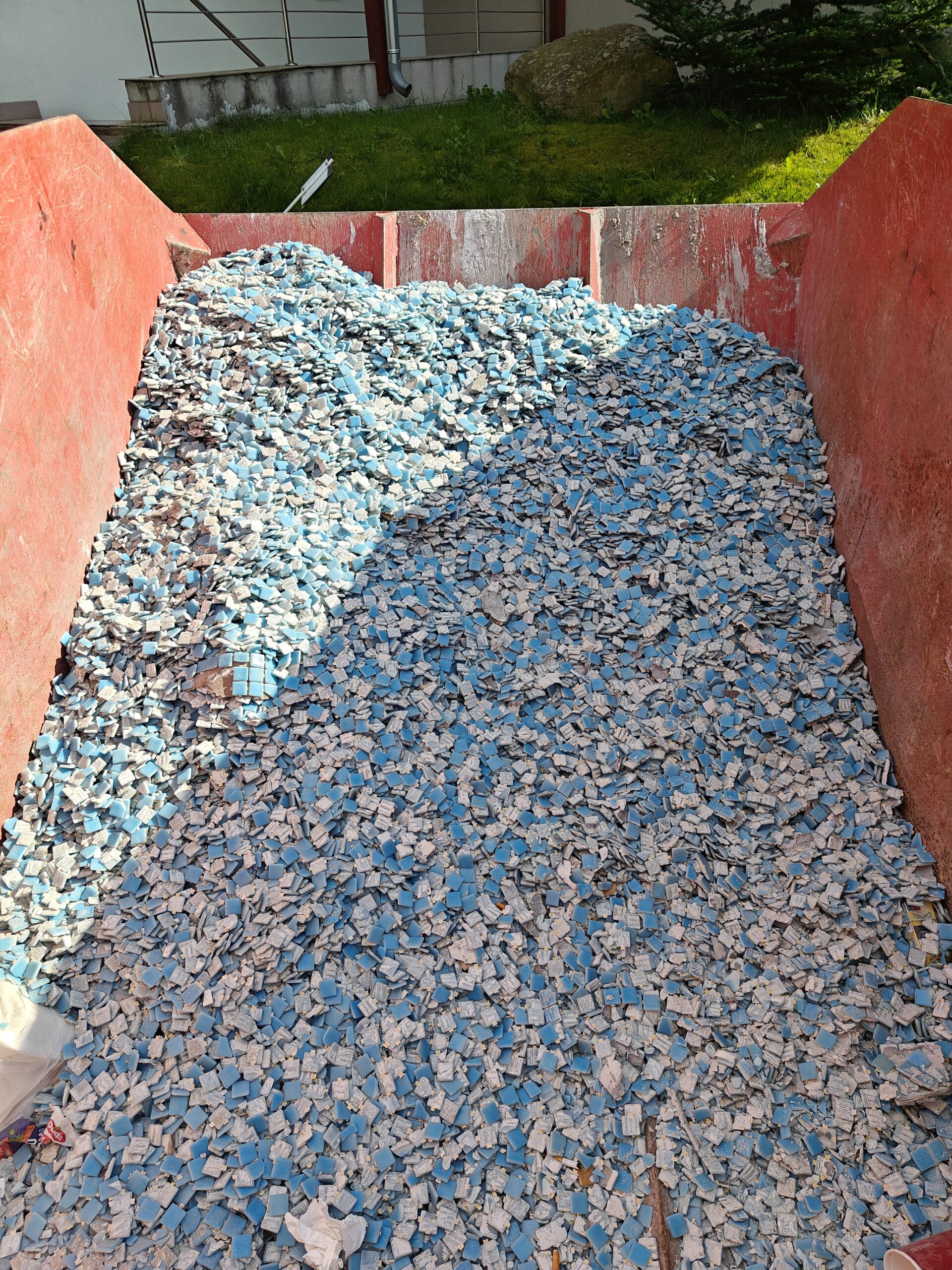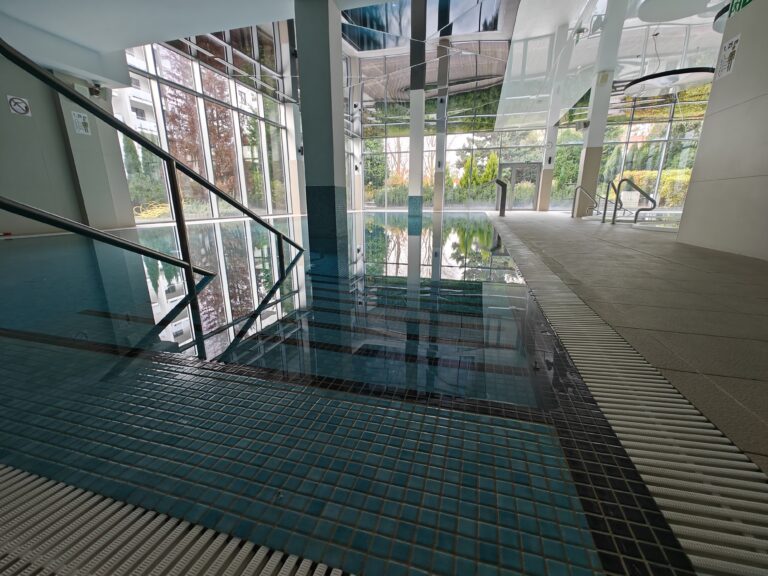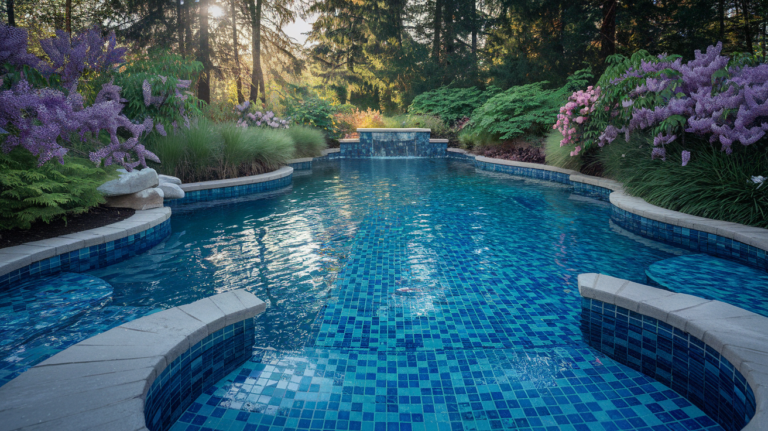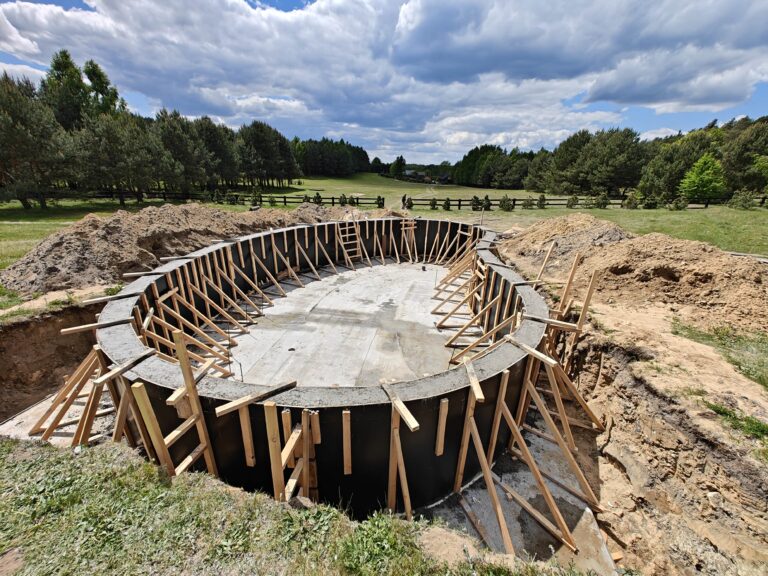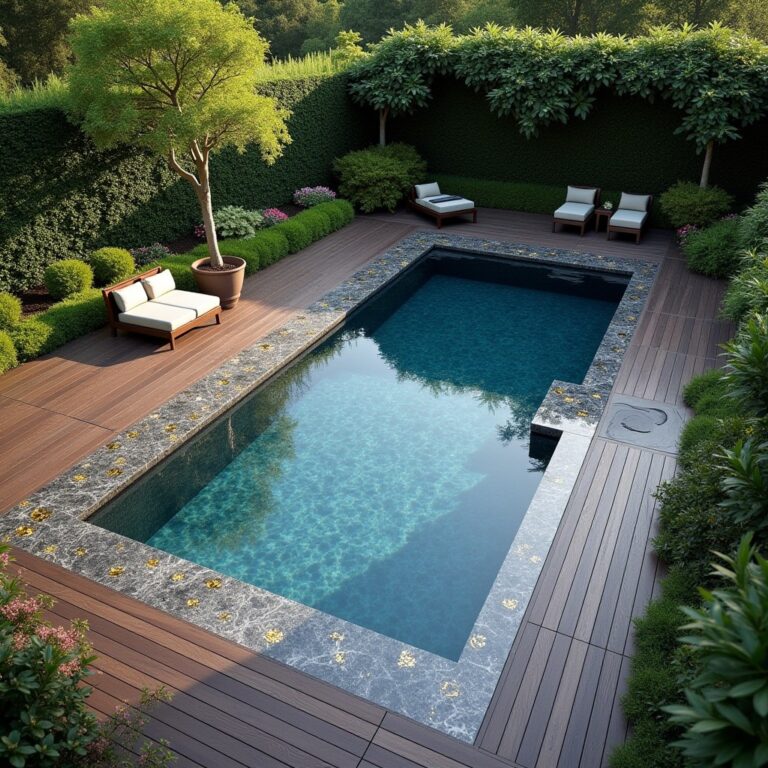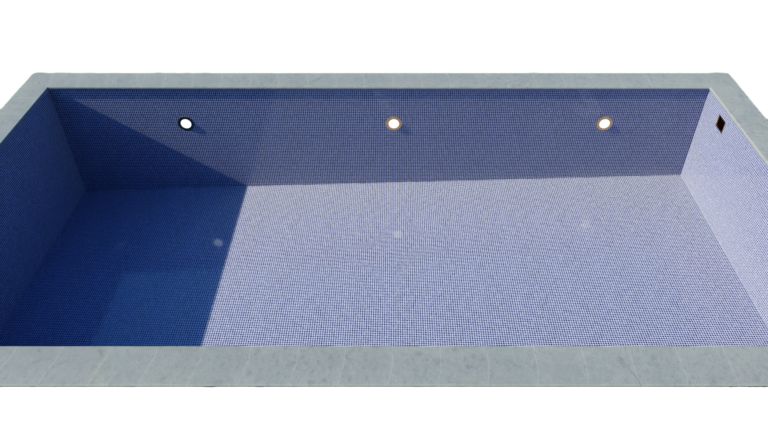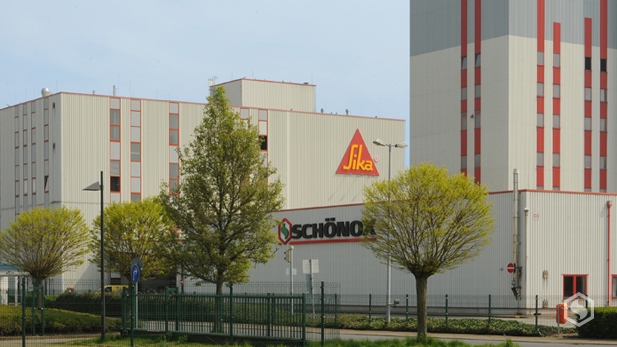As popular as they are, they are costly mistakes in swimming pools.
We are starting a series on “Costly mistakes in swimming pools.”
In order not to make mischief, we will not use in this series the names of pool companies that, behind a facade of fine words and declarations, repeat the same mistakes over and over again and we, over and over again, correct the same mistakes. We will work with specific cases of pool denizens. Pools that ended their lives far too quickly.
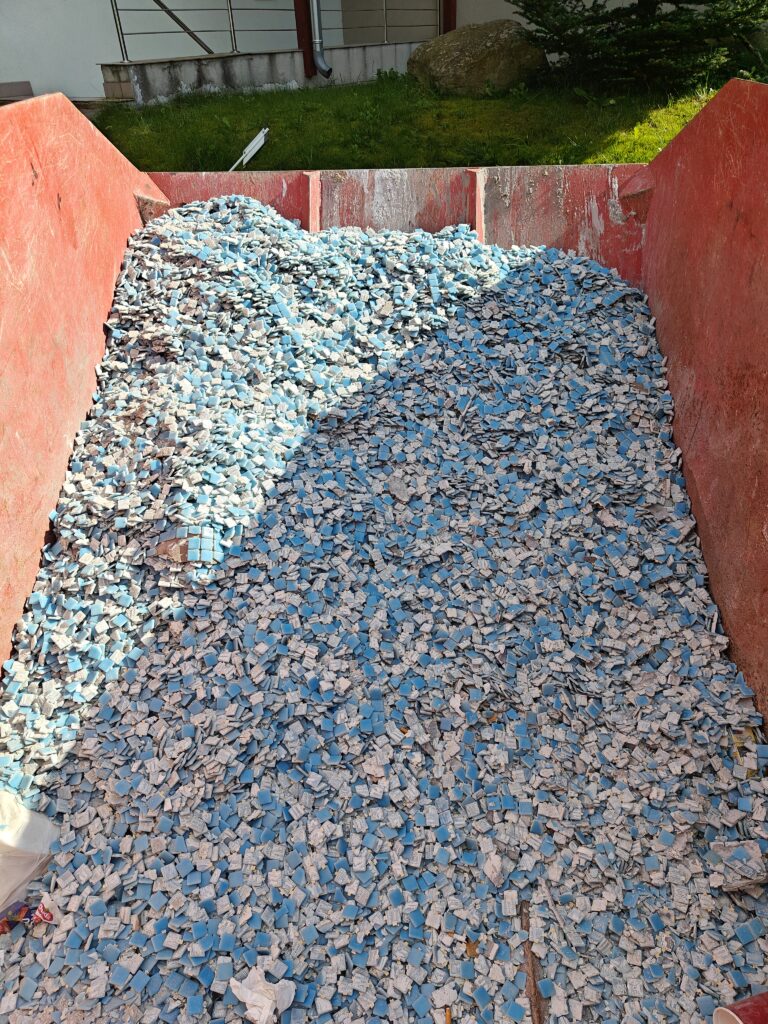
1. passages in the pools are leaking.
Yes dear reader, in swimming pools leak passages. The reinforced concrete pool basin itself must be leak-proof. On the other hand, sealing the passages is one of the most important elements determining the life of your pool.
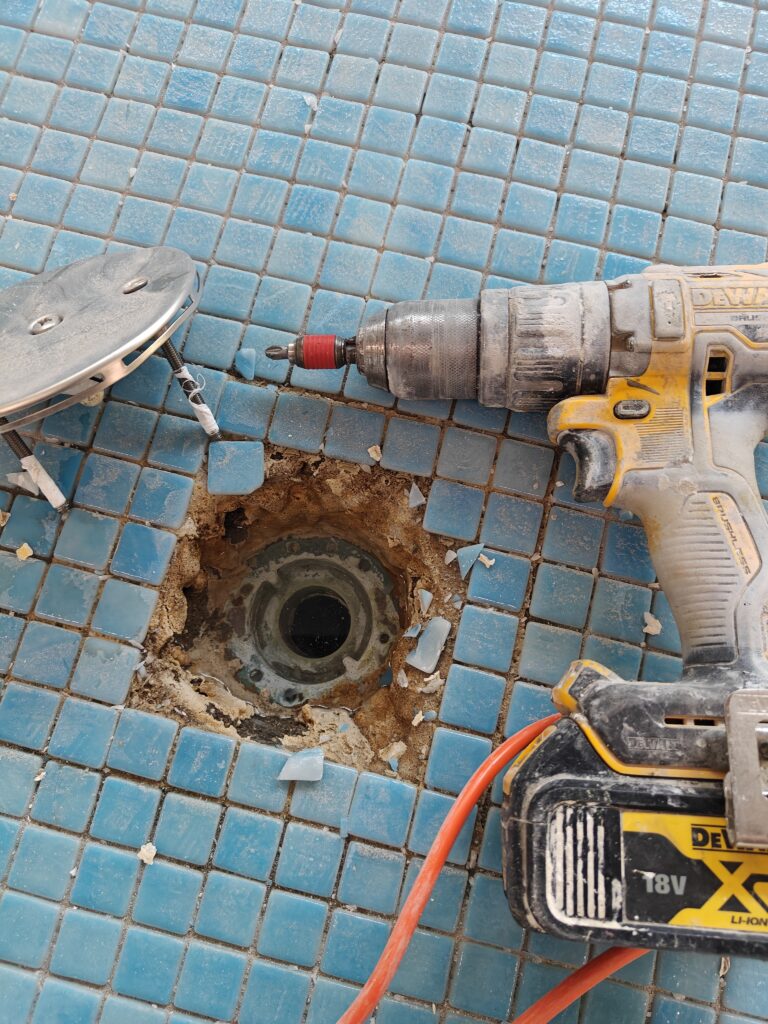
Pictured above, the inflow nozzle of the bottom of the overflow pool.
In fact, it can not be done worse.
The contractor – a large swimming pool company from Opole, made 2 glaring mistakes.
-the nozzle is too low, below the bottom profiling layer, which makes it impossible to properly seal the passage
-complete lack of resin plug, i.e., to seal the
The result?
Scorched, loose mosaic, fungus and moisture in the walls of the basin.
By not properly sealing the transition with resin, we let water in between the concrete basin and the horizontal seal.
As a result, customers ask themselves, most often in the 2-3rd year of using the pool – WHAT went wrong?
Everything went super smoothly, the pool company declared the highest quality and already the mosaic is falling apart and the pool is suitable for renovation?
This is what it looks like, exactly the same but already professionally positioned and sealed bottom nozzle.
Only on the passage prepared in this way we make a cementitious composite seal.
In our case Schonox 2K DS rapid and only on it, we install the cladding without leaving any space for moisture.
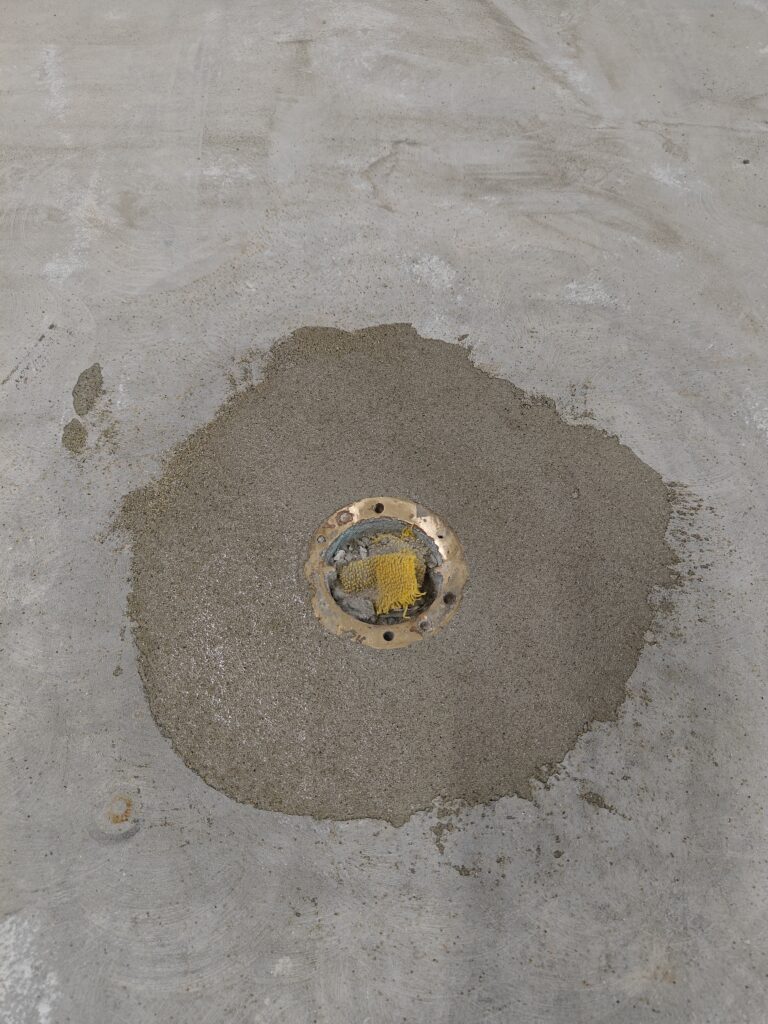
2. seal thickness.
This is the most common mistake due to contractors’ savings – pool sealants are expensive.
Each pool sealant manufacturer very carefully specifies the minimum thickness of the target layer of sealant.
It is never less than 2mm of target layer thickness (after drying) in at least 2 layers.
Meanwhile, a large pool company from Opole:
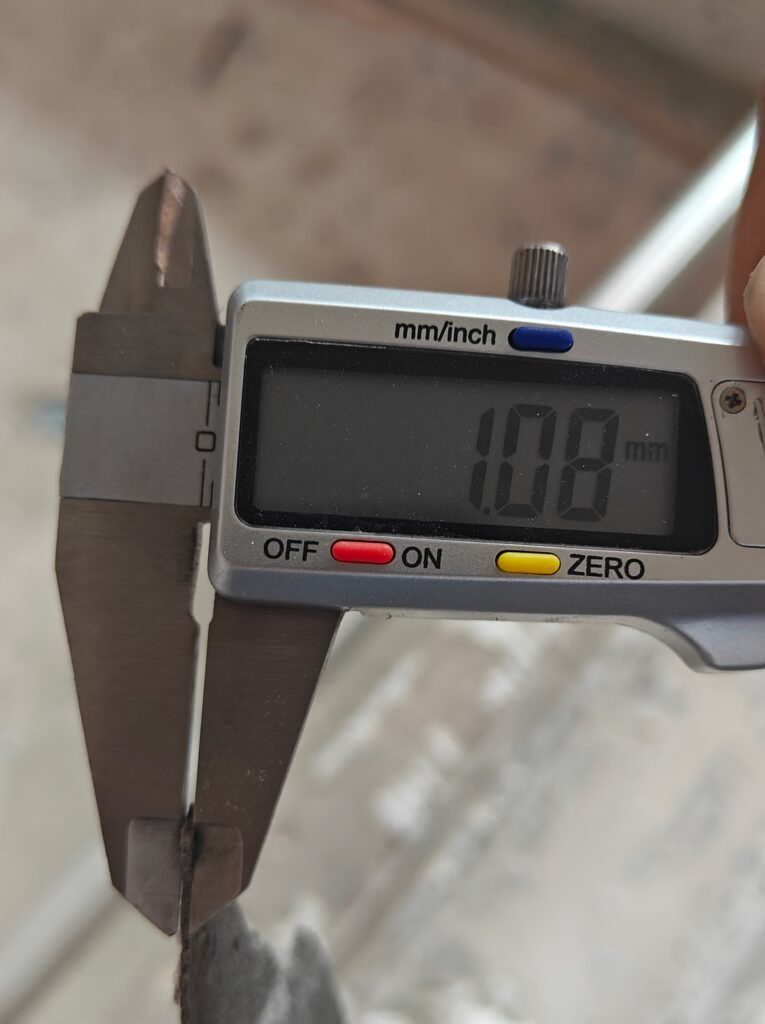
The effect? Exactly the same as above. Scorched, loose mosaic, fungus and moisture in the walls of the basin. By not using the minimum thickness of the seal required by each manufacturer, we let water between the concrete basin and the seal. And this is what the concrete looks like under the seal where life has developed:
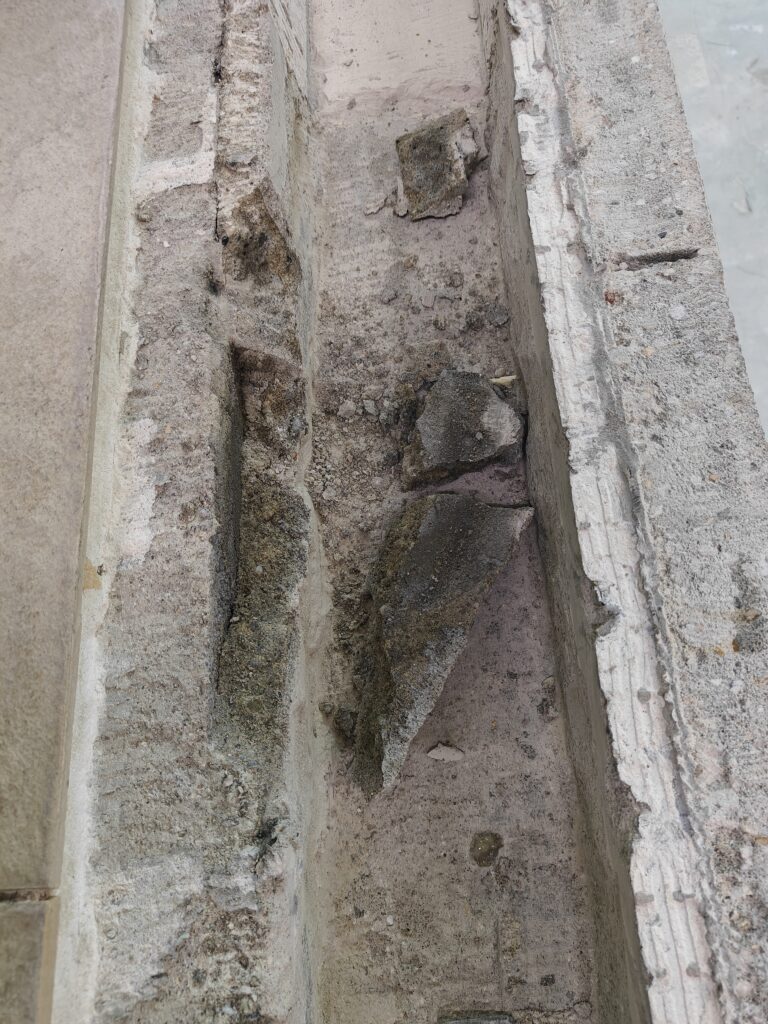
Not recommended.
Cdn.
-
Crystal clear yet healthy pool water.
Clean pool water is key: Key parameters for health and safety. Do you dream of a refreshing swim in perfectly clean water? You need to know that the quality of the water in your pool has a direct impact on the health and comfort of all bathers. Negligence in this area can lead to unpleasant…
-
Artificial intelligence in pool design: The future of luxury and innovation.
Artificial intelligence (AI) is transforming the world, entering areas that not long ago seemed reserved exclusively for human creativity and experience. From medicine and transportation to art and architecture, its influence is becoming increasingly apparent. One of the most surprising yet fascinating applications of AI is in pool design. Does this mean a revolution in…
-
We are building a swimming pool for Dojo Old Village.
The Old Village Dojo is a uniquely atmospheric place that pays homage to traditional Japanese architecture and martial arts. Located in a picturesque setting away from the hustle and bustle of the city, it offers ideal conditions for concentration, training and contemplation. It is the only training complex in Europe built on the principles of…



